 |
King of Chemicals Manufacturers |
Specifications, Properties, Uses, SDS of Clove Oil JP EP BP Ph Eur USP NF FCC Food Grade Manufacturer Supplier Exporter Wholesale & Small Packs, CAS Number 8000-34-8. |
|
| King of Chemicals has several associated companies having accreditations like cGMP, GLP - FDA Approved Good Manufacturing Practice and Good Laboratory Practice of WHO standard, ISO-9001, ISO-14001, ISO/IEC 17025, ISO ISO-45000, HACCP, FSSC 220000, FSSAI, "REACH" Registered, Kosher & Halal Certified. e-CTD and DMF support can be made available if needed. We offer USP NF BP Ph Eur EP IP JP Analytical Reagent FCC Food Grade Chemicals & Nutraceuticals. | |
        |
|
Muby Chem Pvt. Ltd. is a several decades old group of companies, engaged in manufacturing, supplying, distributing, wholesale supplies of Clove Oil JP EP BP Ph Eur USP NF FCC Food Grade for actual users, including retail or small pack supplies for research and development work.
We supply fine and speciality chemicals, pharmaceutical excipients, mineral fortifiers in chemically pure, analytical reagent grade, IP BP USP Ph Eur EP JP and other pharmaceutical grade monograph including FCC Food grade chemicals and Nutraceuticals at best prices. We and/or our associated units have all the facilities to supply as per cGMP standard observing good manufacturing practice and good laboratory practice. We can assure low microbial count and also offer a test certificate for the same. We maintain warehouses across USA, India, and UAE. Our group exports to USA, Canada, Mexico, Argentina, Brazil, Chile, Korea, Malaysia, Thailand, Indonesia, Europe, and several other parts of the world. We supply in wholesale container loads to small pack of few grams. Solid products may be specified for it size and shape as desired by the buyer.

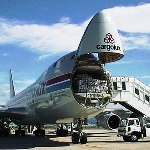
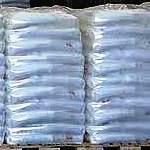
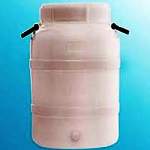
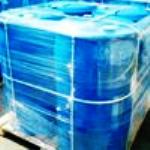
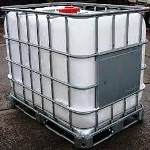
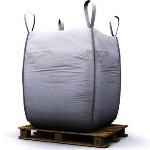
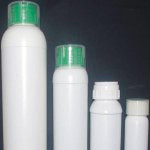
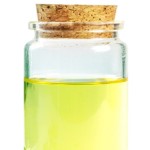
Clove Oil CAS Number 8000-34-8
For Properties Specifications Uses of Clove Oil Click Properties, Specifications, Uses, Price, Process of Clove Oil Manufacturer.
For For SDS MSDS Sheet of Clove Oil Click SDS Safety Data Sheet MSDS Sheet of Clove Oil Manufacturer.
The Properties, Specifications, Monograph and Uses of Clove Oil:
Oil of clove, also known as clove oil, is an essential oil extracted from the clove plant, Syzygium aromaticum.
Clove Oil BP Ph Eur Grade Specifications:
DEFINITION
Essential oil obtained by steam distillation from the dried flower buds of Syzygium aromaticum (L.) Merr. et L.M.Perry (syn. Eugenia caryophyllus (Spreng.) Bullock et S.G.Harrison).
CHARACTERS
Appearance: Clear, yellow liquid, which becomes brown when exposed to air.
Solubility: Miscible with methylene chloride, with toluene and with fatty oils.
IDENTIFICATION
First identification: B
Second identification: A
A. Thin-layer chromatography
TESTS
Relative density: 1.030 to 1.063.
Refractive index: 1.528 to 1.537.
Optical rotation: -2° to 0°.
Fatty oils and resinified essential oils: It complies with the test.
Solubility in alcohol: 1.0 mL is soluble in 2.0 mL and more of ethanol (70 per cent V/V).
Chromatographic profile: To pass the test.
Protected from heat.
Clove Oil USP NF Grade Specifications:
Clove Oil is the volatile oil distilled with steam from the dried flower buds of Syzygium aromaticum (L.) Merr. and L. M. Perry (Fam. Myrtaceae). It contains not less than 85.0 percent (v/v) of total phenolic substances, chiefly eugenol (C10H12O2).
Solubility in 70 percent alcohol: One volume dissolves in 2 volumes of 70 percent alcohol.
Specific gravity: between 1.038 and 1.060.
Angular rotation: It is optically inactive or slightly levorotatory; and the angular rotation is not greater than –1.5.
Refractive index: between 1.527 and 1.535 at 20.
Heavy metals: 0.004%.
Limit of phenol: Shake 1 mL of Oil with 20 mL of hot water: the water shows not more than a scarcely perceptible acid reaction with blue litmus paper. Cool the mixture, pass the water layer through a wetted filter, and treat the clear filtrate with 1 drop of ferric chloride: the mixture exhibits only a transient, grayish green color, but not a blue or violet color.
Assay: Pipet 10 mL of Oil into a suitable cassia flask, the neck of which is graduated from 0 mL to 6 mL at intervals of 0.1 mL. Add 75 mL of 1 N potassium hydroxide, shake the mixture for 5 minutes, and heat for 10 minutes in boiling water, shaking the flask at least 3 times during the heating. Remove the flask from the bath, and cool to room temperature. When the liquids have separated completely, add sufficient 1 N potassium hydroxide to raise the lower level of the oily layer within the graduated portion of the neck. After standing for 18 hours, the volume of the oily layer does not exceed 1.5 mL, indicating the presence in the Oil of not less than 85.0%, by volume, of total phenolic substances.
We also supply Clove Oil JP EP Grade.
Clove Oil FCC Food Grade Specifications
Clove Bud Oil
CAS 8000-34-8
DESCRIPTION
Clove Oil occurs as a colorless or pale yellow liquid with a sharp, spicy odor and taste. It is the volatile oil obtained by steam distillation from the dried flowerbuds of Eugenia caryophyllata Thunberg (Eugenia aromatica L. Baill.) (Fam. Myrtaceae). It darkens and thickens upon aging or exposure to air.
Function: Flavoring agent.
REQUIREMENTS
Identification: The infrared absorption spectrum of the sample exhibits relative maxima at the same wavelengths as those of a typical spectrum as shown in the section on Infrared Spectra, using the same test conditions as specified therein.
Assay: Not less than 85.0%, by volume, of phenols.
Angular Rotation: Between –1.5° and 0°.
Phenols: Passes test.
Refractive Index: Between 1.527 and 1.535 at 20C.
Solubility in Alcohol: Passes test.
Specific Gravity: Between 1.038 and 1.060.
The MSDS-SDS Hazard Statement of Clove Oil:
Clove Oil SDS, Safety Data Sheet
MSDS Sheet, Material Safety Data Sheet 24-Mar-25
1. PRODUCT AND COMPANY IDENTIFICATION
Product Name & Other Names: Clove Oil or Oil of cloves or Eugenia spp.
CAS Number: 8000-34-8
Relevant uses and uses advised against (if any): Industrial Manufacturing.
2. HAZARDS IDENTIFICATION
GHS, Globally Harmonized System Classification in accordance with 29 CFR 1910
Classification according to Regulation (EC) No 1272/2008
Not a hazardous substance or mixture according to Regulation (EC) No. 1272/2008.
This substance is not classified as dangerous according to Directive 67/548/EEC.
Labeling according to GHS & Regulation (EC) No 1272/2008
GHS Label Elements NONE |
Signal Word: None
Precautionary statements:
P261: Avoid breathing dust/fume/gas/mist/vapors/spray.
P262: Do not get in eyes, on skin, or on clothing.
P281: Use personal protective equipment as required.
P302+P352: IF ON SKIN: Wash with plenty of soap and water.
P304+P340: IF INHALED: Remove victim to fresh air and keep at rest in a position comfortable for breathing.
P305+P351+P338: IF IN EYES: Rinse cautiously with water for several minutes. Remove contact lenses, if present and easy to do. Continue rinsing.
P337+313: If eye irritation persists get medical advice/attention.
3. COMPOSITION / INFORMATION ON INGREDIENTS
Product Name & Other Names: Clove Oil or Oil of cloves or Eugenia spp.
CAS Number: 8000-34-8
4. FIRST-AID MEASURES
Always seek medical attention after first aid measures are provided.
Eye contact: Rinse immediately with plenty of water for 10 minutes at least. Contact a physician if symptoms persist.
Skin contact: Wash thoroughly with soap and water; flush with plenty of water. Take off spoilt clothes. Contact physician if symptoms persist.
Ingestion: Wash the mouth with water; seek medical advice immediately.
Inhalation: Remove from exposure site to fresh air and keep at rest. Obtain medical advice.
5. FIRE-FIGHTING MEASURES
Extinguishing media recommended: Water spray, CO2, foam, dry chemicals.
Non-recommended: Do not use direct water jet on burning material.
Extinguishing procedures: Closed containers may build up pressure at elevated temperatures. If possible, containers should be cooled with a water spray.
6. ACCIDENTAL RELEASE MEASURES
Personal precautions, protective equipment, and emergency procedures: Ventilate area of leak or spill. Avoid breathing dust/fumes/gas/mist/vapors/spray. Use individual protective equipment (waterproof boots, suitable protective clothing, safety glasses, etc.). Restrict unprotected personnel from the area.
Environmental precautions: Do not let the product enter drains, soil, or water sources.
Methods and materials used for containment Cleanup procedures and Storage: Contain spilled material. Cover with an inert, non-combustible absorbent material, (e.g. sand, earth, diatomaceous earth, vermiculite). Vacuum or sweep-up and remove to an approved disposal container.
7. HANDLING AND STORAGE
Precautions for safe handling: Apply according to good manufacturing and industrial hygiene practices. Ensure proper ventilation. In case of insufficient ventilation, wear suitable respiratory equipment. Wash thoroughly after handling. Do not drink, eat, or smoke while handling. Avoid contact with skin, eyes, and clothing. Minimize dust generation. Avoid breathing dust/fumes/gas/mist/vapors/spray. Keep container tightly closed. Avoid ingestion and inhalation. Use individual protective equipment (waterproof boots, suitable protective clothing, safety glasses, etc.).
Conditions for safe storage, including any incompatibilities: Store in cool, dry, and ventilated area away from heat sources and protected from sunlight in tightly closed original container. Keep air contact to a minimum. Store protected from heat, sparks and ignition sources and incompatible materials. Avoid inhalation of dust/mist/vapor. Do not store with incompatible materials like strong oxidizing agents, strong acids, and alkalis. Keep air contact to a minimum.
8. EXPOSURE CONTROL
Components with workplace control parameters: TWA 10.00 mg/m3, USA, NIOSH Recommended Exposure Limits
Respiratory protection: Avoid to breath directly on the product. Apply local ventilations when appropriate.
Ventilation: Ensure good ventilation of the workstation.
Hand protection: Avoid skin contact. Use chemical resistant gloves as needed.
Eye protection: Use safety glasses.
Work / hygienic practices: Wash hands with soap and water after handling.
9. PHYSICAL AND CHEMICAL PROPERTIES
Appearance: Yellow to brown viscous liquid.
Odor: No information found.
Odor threshold: No information found.
pH: No information found.
Relative density: around 1.04
Melting point/freezing point: No information found.
Initial boiling point and boiling range: 251C.
Flash point: 115C.
Auto-ignition temperature: No information found.
Decomposition temperature: No information found.
Upper/lower flammability or explosive limits: No information found.
Vapor pressure: No information found.
Vapor density: No information found.
Evaporation rate: No information found.
Flammability (solid, gas): No information found.
Partition coefficient: n-octanol/water: No information found.
Solubility(ies): No information found.
Viscosity: No information found.
10. STABILITY AND REACTIVITY
Reactivity: It presents no significant reactivity hazards, by itself or in contact with water. Avoid contact with strong acids, alkalis, or oxidizing agents. Avoid high temperatures and flames.
Decomposition: Carbon monoxide and unidentified organic compounds may be formed during combustion.
11. TOXICOLOGICAL INFORMATION
LD 50 ORAL/RAT (mg/Kg): 2,650 mg/kg.
Carcinogenicity: No component of this product present at levels greater than or equal to 0.1% is identified as probable, possible, or confirmed human carcinogen by IARC.
Mutagenic Effects: No information found.
Teratogenic Effects: No information found.
Developmental Toxicity: No information found.
Reproductive Effects: No information found.
12. ECOLOGICAL INFORMATION
Toxicity to fish: No information found.
Persistence and Degradability: No information found.
Mobility: No information found.
Bioaccumulation/ Accumulation: No information found.
Results of PBT and vPvB assessment: No information found.
13. DISPOSAL CONSIDERATIONS
In accordance with local environmental laws. Avoid disposing into drainage systems and into the environment.
14. TRANSPORT REGULATIONS
Land Transport DOT USA TDG Canada & ADR/RID Europe: Not controlled.
Sea Transport IMO/IMDG: Not controlled.
Air Transport ICAO/IATA: Not controlled.
15. REGULATORY INFORMATION
USA:
SARA 311/312 Hazards: No SARA hazards.
California Prop. 65 Components: Not listed to cause cancer, birth defects, or any other reproductive harm.
16. Other Information
DISCLAIMER: The information and recommendations set forth herein are presented in good faith and believed correct as of the date hereof. It is compiled from various sources, and it is not necessarily all inclusive nor fully adequate in every circumstance. In addition, these suggestions should not be confused with nor followed in violation of applicable laws, regulations, rules, or insurance requirements applicable. This SDS MSDS sheet is intended only as a guide to the appropriate precautionary handling of the material by a professionally trained person using this product. Individuals receiving the information must exercise their independent judgment in determining its appropriateness for a particular purpose. This shall not constitute a guarantee for any specific product features and shall not establish a legally valid contractual relationship. In no case shall our company be liable to loss or damages by the product user.

Clove Oil Manufacturers, Suppliers, Exporters, Wholesalers:
King of Chemicals manufacturers

Plot No. 2900/46&47 + 2900/163to167, GIDC, Ankleshwar, Dist. Bharuch, India
India, USA, UAE
TEL: (Office) 91-22-23774610, 91-22-23723564
e-mail: info@kingofchemicals.com
Copyright and Usual Disclaimer is Applicable --- March 24, 2025
If I give you “My Word” Nobody can undo it.
If I sign an “Agreement” my Lawyer will undo it
Our products are for industrial and laboratory use only. The user must test the material before use. We are not dispensing chemists or druggist and do not offer over the counter type (OTC) products for medical use by individuals.
We and our associates manufacture pure chemicals surpassing Monograph Specifications of Analytical Reagent Standards, British & European Pharmacopoeia BP Ph Eur EP Standard, US Pharmacopoeia USP NF Standard, Indian Pharmacopoeia IP Standard, Japan Pharmacopoeia JP Standard, FCC Food Grade Standard. |
|